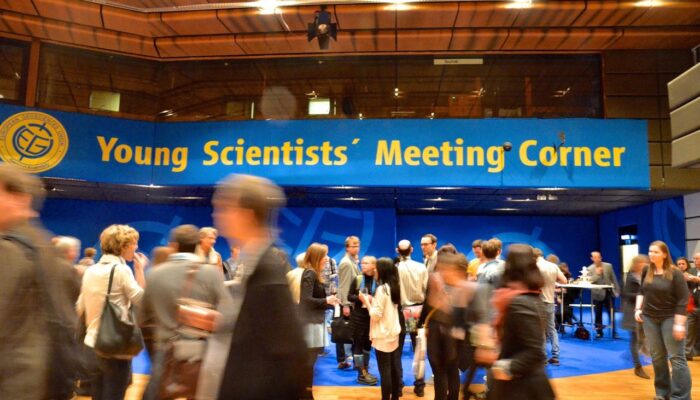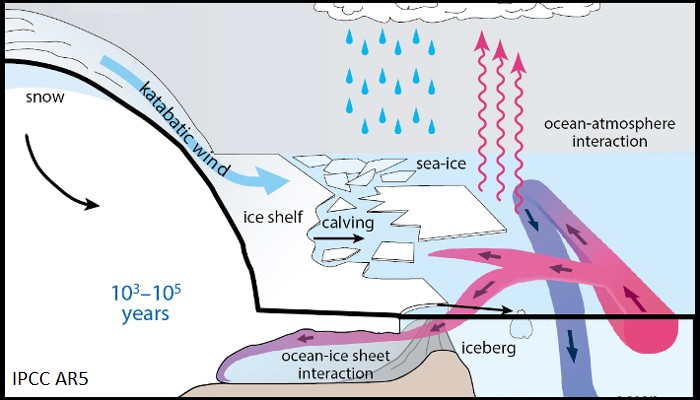Hello again, I’m Kathi Unglert, and you’re about to read my third and final post as a student reporter at EGU 2016. Today I am writing about my experience in the cryosphere sessions from my volcanology perspective. In preparation for the conference I kept thinking about what sort of research I would see in the cryosphere sessions. I had never really attended any specific conferences or meetings on ...[Read More]
Careers at the European Space Agency – How and Why?
As the pace of modern life speeds up and job competition becomes even more fierce, it is good to have a focused plan of where you would like to be in the future. The European Space Agency (ESA) offers traineeships and research positions to young scientists on a regular basis. They may be a springboard into your chosen career path, but how do you go about bagging one of these valuable opportunities ...[Read More]
Image of the Week – Storing water in Antarctica to delay sea-level rise

Sea level rise Sea-level rise is one of the main impacts of the current global warming and its rate has dramatically increased in the last decades (the current rate is about 3 mm per year). Even if greenhouse gas emissions were stopped today, sea level would continue to rise due to the slow Earth climate system response (IPCC, 2013, chap. 13). It is therefore a considerable threat for popul ...[Read More]
When Cryospheric Research Transforms Lives
My name is Kathi Unglert, and I’m reporting from the EGU 2016 General Assembly as part of the EGU student reporter programme. Below is my second contribution to the Cryosphere Blog – this time about how cryosphere research can have a real impact on people’s lives. Antoni Lewkowicz – he’s famous, according to a comment I overheard in Tuesday’s PICO session on applied geophysics in cryosphere ...[Read More]
The art of surviving a week of conferencing
Hello everyone! My name is Kathi Unglert and I’m a PhD student in volcanology at the University of British Columbia in Vancouver. I will be reporting for the Cryospheric Sciences blog during the upcoming EGU General Assembly as part of the “Student Reporter Programme”. With the meeting only a few days away, I thought I’d put together a quick guide how to make the most out of a whole week of confer ...[Read More]
Image of the Week: The Bipolar Seesaw

The colourful graphs above show how the climate changed in the period from 65 to 25 thousand years ago when Earth was experiencing an ice age. A wealth of information on the dynamics of our climate is embedded in the curves, especially how the northern and southern hemisphere interact, and how fast climate can change. The figure represents thousands and thousands of hours of work by scientists, te ...[Read More]
What to do at EGU — a guide for early-career scientists

Are you going to the EGU General Assembly in Vienna next week? Check out these events for early career scientists. To remind you when and where all these nice events and activities take place, you can directly view and import them in your electronic calendar (Isn’t it wonderful?! :-)) Social event for Early Career Cryosphere Scientists! If you cannot make it to anything else; make it to our ...[Read More]
Image of The Week – When Glaciers Fertilize Oceans

Today’s Image of the Week shows meltwaters originating from Leverett Glacier pouring over a waterfall in southwest Greenland. We have previously reported on how meItwater is of interest to Glaciologist (e.g. here) but today we are going to delve into how and why Biologists also study these meltwaters and how the cryosphere interacts with biogeochemical cycles in our oceans. Where? Leverett G ...[Read More]
Image of Week: Blue Ice in East Antarctica

The blue ice areas of Antarctica are one of the most fascinating parts of the ice sheet. In these regions, snowfall is so low that the ice is laid bare by the wind and consequently sublimates. This exposes beautiful, blue ice surfaces, like an ocean frozen in time. This picture was taken at a site named “Windy Corner” by the Kottas Mountains, in the northernmost part of the Heimefrontf ...[Read More]
Image of the Week: Ice Sheets in the Climate

Ice sheets play a central role in the climate system. They store significant amounts of fresh water and are the conveyor belts for transporting snow that accumulates on land back into the oceans. The figure above shows a few of the ice-climate interactions. In the figure below (click on the figure for full resolution) we see the complete picture of the processes taking place between ice sheets, so ...[Read More]


